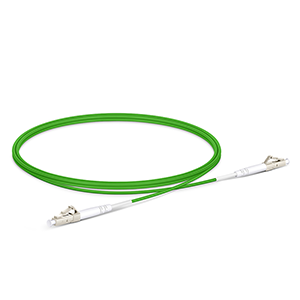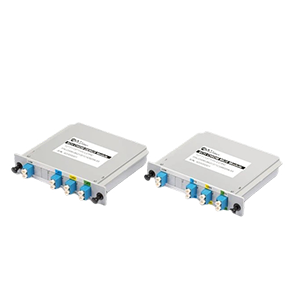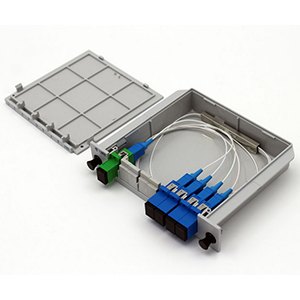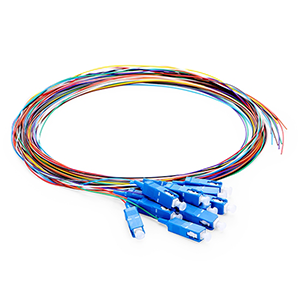Fiber optic attenuators play an important role in fiber optic communication systems. This article will focus on how to properly install and adjust fiber optic attenuators. We will first explain the working principle and main parameters of fiber optic attenuators, and analyze the characteristics and applicable scenarios of different types of fiber optic attenuators. Next, we will introduce the correct installation steps of fiber optic attenuators in detail, including choosing the appropriate installation location and connection method, and explain the key points of mechanical installation and fiber optic connection.
Subsequently, we will introduce the use of test equipment such as optical power meters for measurement, and adjust the attenuation value based on the measurement results to achieve optimal performance. In addition, we will analyze the impact of factors such as temperature and interface cleanliness on attenuator performance, and provide optimization suggestions in practical applications. Finally, we will explain the importance of regular inspection and cleaning, and introduce common troubleshooting and preventive measures.
Basic principles and characteristics of fiber optic attenuators
Let me introduce you to the basic principles and characteristics of fiber optic attenuators in detail.
The working principle of the optical fiber attenuator:
The optical fiber attenuator is a passive optical device, and its basic working principle is as follows:
- Precision optical attenuation film or attenuation sheet is used inside the attenuator
- When the optical signal passes through the attenuation film/sheet, a certain degree of optical energy loss will be generated
- By adjusting the position of the attenuation sheet or selecting different types of attenuation films
- Controllable attenuation of the optical signal power can be achieved
Main parameters of the optical fiber attenuator:
(1) Attenuation
- Indicates the power loss ratio of the optical signal after passing through the attenuator
- Usually expressed in dB, such as 3dB, 6dB, 10dB, etc.
(2) Working wavelength range
- The performance and characteristics of the attenuator are related to the wavelength of the optical signal
- Different types of attenuators are suitable for different wavelength ranges
(3) Insertion loss
- Refers to the inherent loss of the optical signal when it passes through the attenuator
- Ideally, the insertion loss should be minimized
Characteristics of different types of optical fiber attenuators:
(1) Adjustable attenuator
- The attenuation can be continuously adjusted by adjusting the position of the attenuator
- Applicable to scenarios where frequent adjustment of optical power is required
(2) Fixed attenuator
- Use fixed attenuation film, the attenuation is not adjustable
- Suitable for applications with relatively stable optical power
(3) Fiber attenuation gasket
- Directly insert into the fiber line to achieve power attenuation
- Simple structure, low cost
(4) Fiber ring attenuator
- Use macrobending loss caused by fiber bending to achieve attenuation
- Suitable for compact optical device integration
In short, fiber attenuators are important passive devices commonly used in optical communications, and appropriate types can be selected according to different application scenarios.
Correct installation steps of fiber attenuators
Let me introduce you to the correct installation steps of fiber attenuators in detail.
Choose a suitable installation location and connection method:
(1) Installation location
- Choose a suitable location between the light source and the receiving device
- Avoid installing in a location where the external environment is prone to change
(2) Connection method
- Choose plug-in or attenuation plate connection according to actual needs
- The plug-in type is suitable for scenarios where the attenuation needs to be adjusted frequently
- The attenuation plate type is suitable for scenarios where the optical power is relatively stable
Key points for mechanical installation and optical fiber connection of optical fiber attenuators:
(1) Fixed installation
- Use a suitable bracket or rack for fixed installation
- Ensure that the attenuator is installed firmly and without looseness
(2) Fiber connection
- Carefully clean the attenuator and fiber interface to ensure that there is no dust
- Be careful to connect the fiber interface and avoid excessive bending of the fiber
- Ensure that the fiber and attenuator interface are fully aligned
(3) Interface protection
- Protect the fiber interface with a cap when not in use
- Prevent dust, water vapor and other pollutants from entering
(4) Cable routing
- Plan the optical cable routing path reasonably to avoid excessive bending
- Use fixed brackets or pipes to organize the wiring
(5) Identification management
- Clearly identify the attenuator and the optical fiber connected to it
- Convenient for later maintenance and troubleshooting
Following the above installation steps can ensure that the optical fiber attenuator works stably and reliably for a long time.
Adjustment and optimization of optical fiber attenuator
Let me introduce you to the adjustment and optimization of optical fiber attenuator in detail.
Measurement using optical power meter and other test equipment:
(1) Optical power measurement
- Use an optical power meter to measure the optical power at the input and output of the attenuator
- Calculate the difference between the two to get the actual attenuation value
(2) Reflection loss test
- Use an optical time domain reflectometer (OTDR) to measure the reflected signal strength
- Calculate the reflection loss value to evaluate the attenuator performance
(3) Insertion loss test
- Measure the insertion loss when the optical path is completely disconnected
- The intrinsic loss of the attenuator itself can be obtained
Through the above tests, the actual performance parameters of the optical fiber attenuator can be fully understood.
Adjust the attenuation value according to the measurement results to achieve the best performance:
(1) Adjust the attenuation amount
- Appropriately adjust the attenuation value according to the link power measurement results
- Ensure that the receiving end power is within the optimal working range
(2) Balance the optical path power
- Use multiple attenuators to adjust the power of different optical path sections
- Achieve power balance of the entire optical link
(3) Prevent optical detector saturation
- Install an attenuator in front of the detector to control the input power
- Avoid detector output saturation distortion
(4) Isolate inter-stage reflections
- Install an attenuator between the transmitter and the amplifier
- Reduce the interference of reflection noise on the transmitter
By properly adjusting the attenuation value, the performance and stability of the entire optical communication system can be optimized.
Key factors affecting the performance of optical fiber attenuators
Let me analyze the key factors affecting the performance of optical fiber attenuators for you and provide some optimization suggestions.
Key factors affecting the performance of optical fiber attenuators:
(1) Temperature
- Temperature changes will cause slight changes in the internal structure of the attenuator
- Therefore, parameters such as attenuation and insertion loss will deviate
(2) Interface cleanliness
- Dust, oil, etc. on the optical fiber interface will increase reflection and scattering
- Reduce light transmission efficiency and increase overall loss
(3) Mechanical stress
- If the attenuator is subjected to excessive mechanical stress during installation
- It will also cause changes in attenuation and optical loss
(4) Aging
- Under long-term use, optical components such as attenuation films will gradually age
- Causing performance to slowly decline over time
The above factors will affect the performance stability of the optical fiber attenuator to a certain extent.
Optimization suggestions in practical applications:
(1) Reasonably control the ambient temperature
- Choose a suitable installation location to avoid extreme temperature changes
- Temperature control measures can be used to maintain a stable temperature when necessary
(2) Clean the optical interface regularly
- The optical fiber interface should be carefully cleaned before and after each use
- Use special cleaning tools and alcohol to ensure that there is no dust
(3) Standardize mechanical installation
- Rationally select the installation bracket to avoid excessive mechanical force
- Ensure that the attenuator installation position is stable and reliable
(4) Replace aging parts in time
- Check performance indicators regularly according to actual use time
- Replace optical parts that may age, such as attenuation films, in time
By taking the above optimization measures, the long-term stability and reliability of the optical fiber attenuator can be effectively improved.
Maintenance and care of optical fiber attenuators
Let’s talk about the maintenance and care of optical fiber attenuators in detail.
The importance of regular inspection and cleaning:
(1) Clean the fiber interface
- Carefully inspect and clean the interface before and after each use
- Ensure that there is no dust or oil residue
(2) Check the installation status
- Regularly check whether the attenuator is firmly fixed
- Ensure that there are no mechanical problems such as looseness or position offset
(3) Test performance parameters
- Regularly use test instruments to measure attenuation, reflection loss, etc.
- Compare with the initial value and monitor performance changes
(4) Monitor environmental conditions
- Check the temperature, humidity, pollution, etc. of the working environment
- Ensure that the attenuator meets the use requirements
Regular maintenance inspections are essential to ensure the long-term stable and efficient operation of the attenuator.
Common troubleshooting and preventive measures:
(1) Attenuation deviation
- May be caused by changes in ambient temperature
- Need to readjust the attenuation value to correct
(2) Increased reflection loss
- May be caused by interface contamination or alignment deviation
- Need to clean the interface and readjust the alignment
(3) Increased insertion loss
- May be caused by unreasonable optical path design
- Need to optimize the optical path layout to reduce loss
(4) Long-term performance degradation
- May be due to aging of the attenuation film
- Need to replace the relevant aging parts in time
In addition, pay attention to the following preventive measures:
- Standardized installation and wiring
- Reasonable control of the working environment
- Regular inspection and maintenance
The above measures can effectively prevent and solve the problems that may occur in the use of attenuators.
Summary
Correct installation and adjustment of optical fiber attenuators are essential to ensure the excellent performance of optical fiber communication systems. Our company has long been focusing on the research and development and production of optical communication equipment and its supporting products, and has rich industry experience. The various types of optical fiber attenuator products we provide have reached the industry-leading level in terms of performance indicators and reliability, and can meet your demanding needs for efficient and stable network construction.
Whether you need to deploy fiber optic attenuators in telecom operator networks, data centers, or enterprise campuses, we can provide you with professional installation guidance and adjustment suggestions. At the same time, our technical team will provide you with a full range of support services, including on-site surveys, solution design, and equipment maintenance. Contact us now to learn more about the application of fiber optic attenuators.
Optical Attenuators FAQ
An optical attenuator is a device used to intentionally reduce the power level of an optical signal in a fiber optic network.
Attenuators are used to prevent receiver saturation, balance power levels, and simulate longer cable lengths for testing.
The main steps are to clean the fiber end faces, connect the attenuator inline with the fiber, and secure the connections.
The required attenuation level depends on factors like input power, receiver sensitivity, and desired safety margin.
Essential tools include a fiber optic cleaning kit, power meter, and possibly a variable optical attenuator.
Use approved solvents and techniques to ensure the fiber ends are free of any contamination.
Avoid excessive bending of the fiber, use compatible connector types, and ensure all connections are secure.
Measure the input and output optical power levels to confirm the attenuator is providing the expected level of loss.
Yes, variable optical attenuators can be adjusted to change the attenuation level as needed.
Potential problems include dust/dirt buildup, misalignment, thermal effects, and mechanical stress on the fiber.





